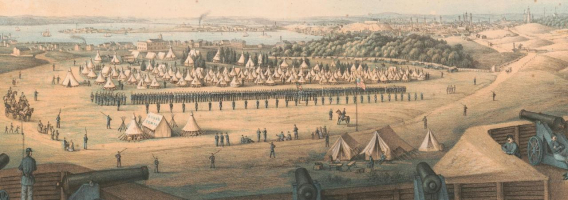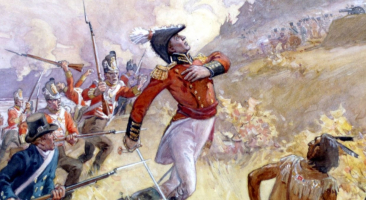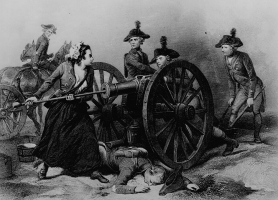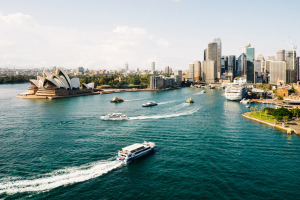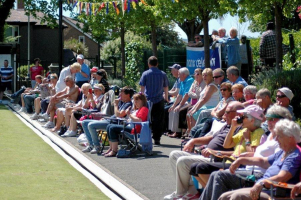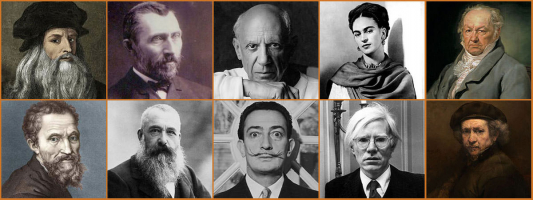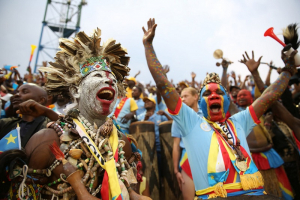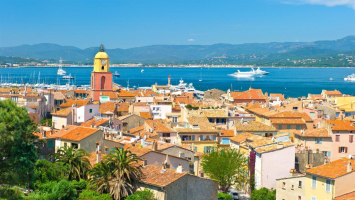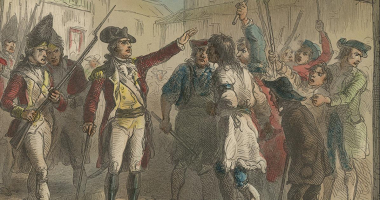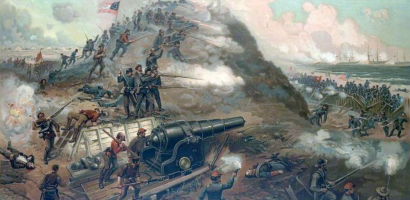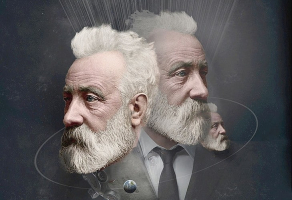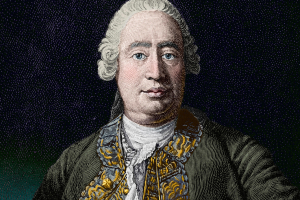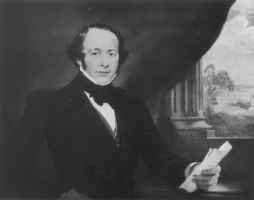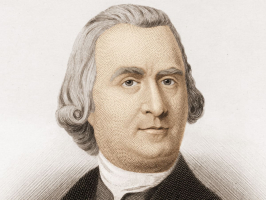Top 5 Facts About Baltimore in the War of 1812
Baltimore, Maryland, contributed significantly to the War of 1812 and were shaped by it. During this significant early American republican event, find out more ... read more...about Baltimore. Here are facts about Baltimore in the War of 1812.
-
The British sent a fleet up the Potomac to block Washington's access to the water and to threaten the thriving ports of Georgetown and Alexandria, which are both close to Washington. The American defense forces were so intimidated by the fleet's mere presence that they abandoned Fort Warburton without firing a shot, and undefended Alexandria was forced to submit.
After many days of robbing city merchants of hundreds of tons of goods, the British moved their focus north to Baltimore in the hopes of dealing a crushing blow to the discouraged Americans. One of the facts about Baltimore in the War of 1812, Baltimore was a busy port and was thought by the British to harbor many of the privateers who were raiding British shipping. Vice-Admiral Sir Alexander Cochrane was to besiege Fort McHenry, which was the key military structure in Baltimore Harbor, while Ross was to launch a land attack at North Point.
Major General Samuel Smith, the state militia commander, had organized Baltimore's fortifications in advance.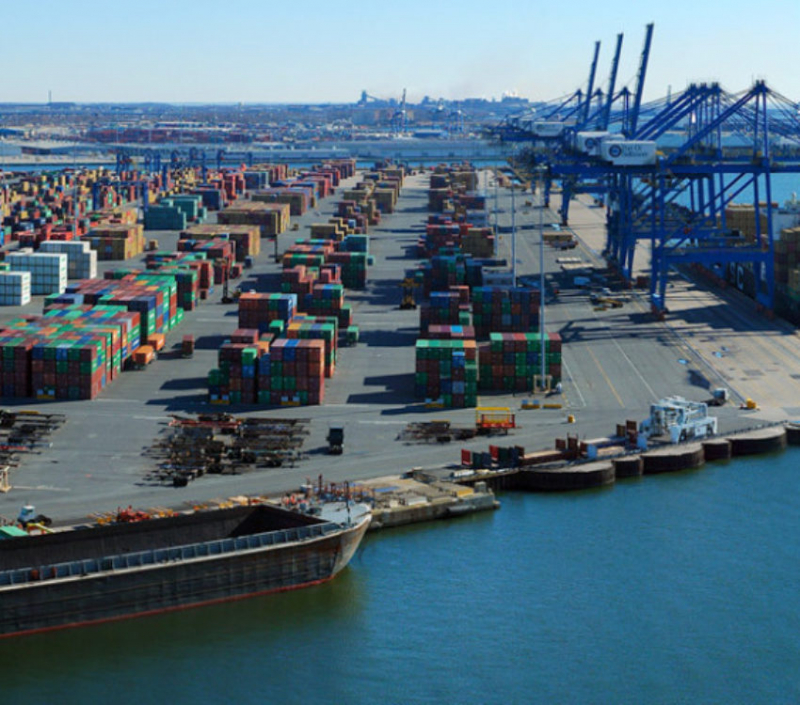
Photo: Visit Baltimore - Port of Baltimore 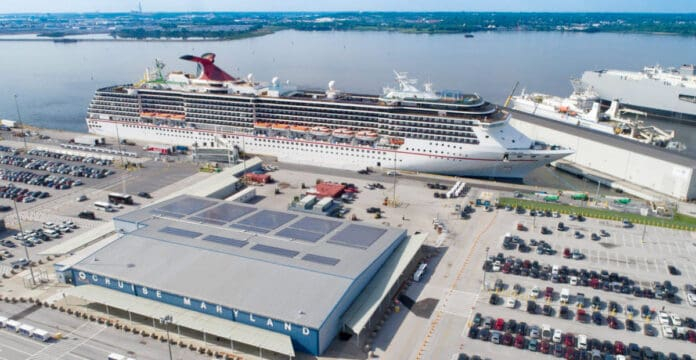
Photo: Cruise Hive - Port of Baltimore -
The battle of Baltimore was divided into three phases: the bombardment of Fort McHenry by the British navy in the harbor, action at Hampstead Hill, and the Battle of North Point, five miles to the east of the city.
British Maj. Gen. Robert Ross turned north to Baltimore after the British routed American forces at the Battle of Bladensburg and destroyed the nation's capital. The 3,000 Maryland militiamen led by Gen. George Washington provided opposition to British forces on the opening day, September 12, 1814. John Stricker wanted to hold off the British troops long enough for Baltimore's defenses to be finished. Ross and the rest of the bigger British force would suffer significant losses at the hands of Stricker and his troops. The Americans were eventually compelled to retreat inside Baltimore though. The British stormed Hampstead Hill the following day, on September 13. The British commanders opted against launching a frontal assault on the defenses because this hurriedly built redoubt was much stronger than they had anticipated. Instead, the British fleet started its attack on Fort McHenry early on September 14 and continued for more than 25 hours. The additional fortifications caused very minor damage to the fort, and the British quickly left as it became evident that the Marylanders would not give in.
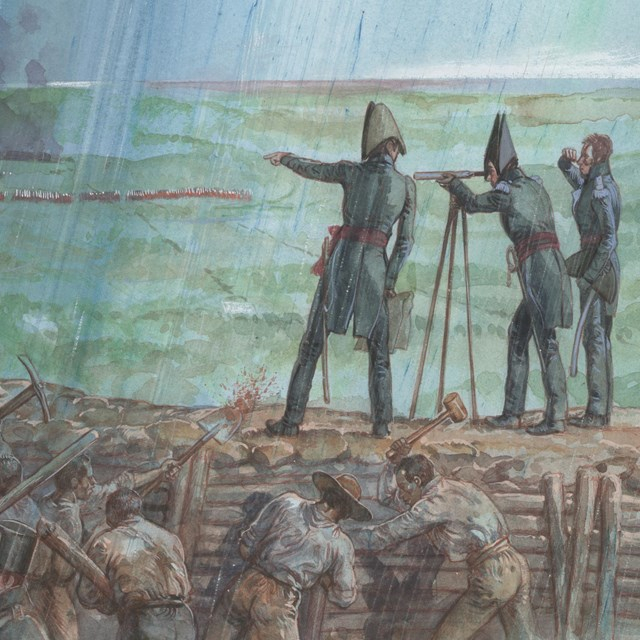
Photo: National Park Service - Battle of Baltimore 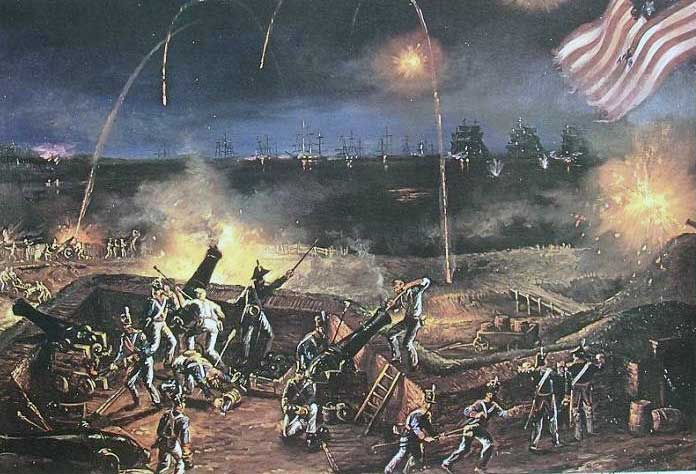
Photo: Historycentral.com -\ BAttle of Balitmore -
Francis Scott Key, a barrister from Washington, was negotiating the release of American prisoners from a British truce ship. He was inspired to compose "Defence of Fort M'Henry" after he observed Pickersgill's flag flying over Fort McHenry. Key gave his poem to Joseph H. Nicholson, his brother-in-law, who noticed that the words matched the well-known music "The Anacreontic Song," written by English composer John Stafford Smith.
The song was published on September 20 in The American and The Baltimore Patriot, along with the note, "Tune: Anacreon in Heaven." A total of seventeen newspapers from Georgia to New Hampshire published the song after it immediately gained popularity. The song was initially titled "Defence of Fort M'Henry," but Thomas Carr of the Carr Music Store in Baltimore published the words and music together shortly after under the name "The Star Spangled Banner." The raised fourth, which Thomas Carr's arrangement added, eventually became "The Anacreontic Song's" standard deviation. The song gained popularity, and Baltimore actor Ferdinand Durang sung it at Captain McCauley's Tavern for the first time in public in October. The song was republished in November 1814 by Washington Irving, who was the editor of the Analectic Magazine in Philadelphia at the time.
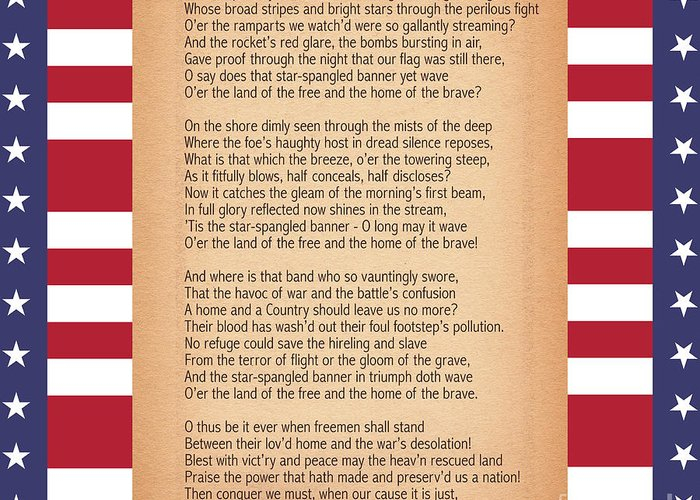
Photo: Pixels US National Anthem - The Star-Spangled Banner Video: Musicplay -
A fight between musketry and artillery lasted for several afternoon hours during the Battle of North Point. On the following day, the British also intended to attack Baltimore by sea, but the Royal Navy was unable to weaken Fort McHenry at the entrance to Baltimore Harbor in support of an attack by the British Army from the northeast.
The British eventually came to the conclusion that they could not block the passage in order to coordinate an attack on Baltimore with their land forces. Captain Charles Napier led a last-ditch feint and barge attack along the Middle Branch of the river to the west of the fort during a torrential downpour. It turned around after incurring significant losses from the vigilant gunners of Fort Covington and Battery Babcock after becoming split and partially diverted in the storm. The British abandoned the assault and sailed downriver to reassemble their force, which had fled from Baltimore's east side. One of the facts about Baltimore in the War of 1812 cannot be ignored, on the night of the attack, Baltimore's lights were all turned off, and the fort was blasted for 25 hours. The fort's flag, which was still flying over it, was lit solely by the explosions of shells above Fort McHenry. The poem "Defence of Fort M'Henry," which American lawyer Francis Scott Key later adapted to music as "The Star-Spangled Banner," was inspired by the defense of the fort.
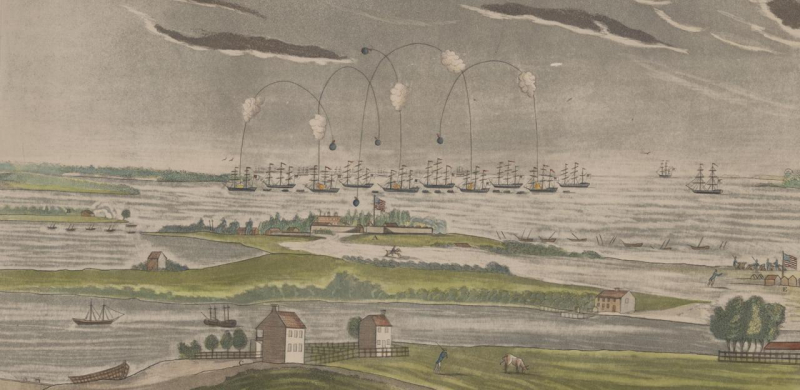
Photo: American Battlefield Trust - Baltimore during the War of 1812 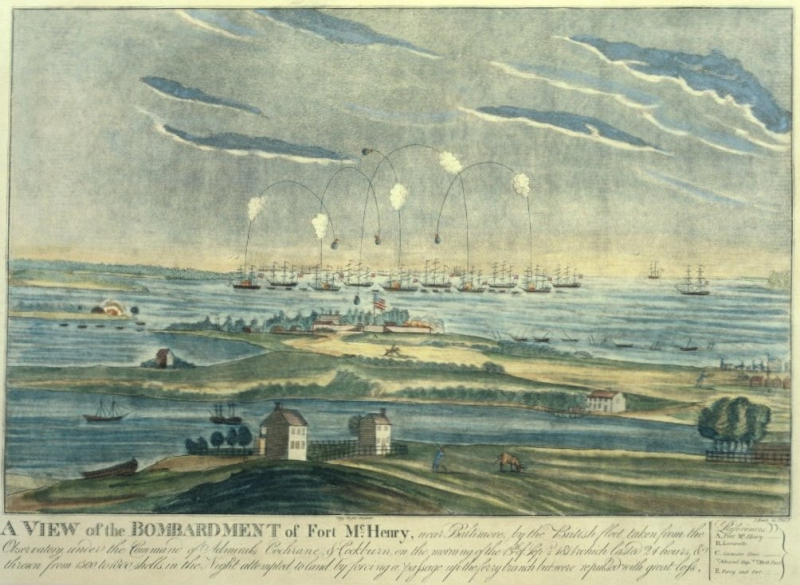
Photo: Wikipedia -
The war with Britain became a reality for Marylanders in the early spring. British forces were positioned in the direction of the Chesapeake Bay after beginning the year with a firm grip on the Canadian border.
Baltimore had a reputation as a haven for privateers and pirates among the British because British ships launched from Baltimore Harbor for years tormented their fleet. The British Navy blockaded most of the eastern shore in an effort to stop such assaults and to obstruct the shipping of supplies or troops. The British vessels and frigates went up the Chesapeake in March. The British were able to quickly and easily land men on either the eastern or western coastlines of Maryland thanks to these ships. British troops started conducting interior raids a month after the blockade was put in place.
Due to the lack of definite wins during the Chesapeake Campaign in 1813, American forces fared better in the frontier. While the land forces made little progress, American naval ships made significant gains on the Great Lakes. British and indigenous forces on the western front were unable to get supplies or reinforcements because Lake Erie was under American hands. The American Army attacked York, the capital of Canada, while the British were occupied in the West (now Toronto). The American soldiers, in a resounding victory, looted and set a number of significant structures on fire, including York's Parliament buildings.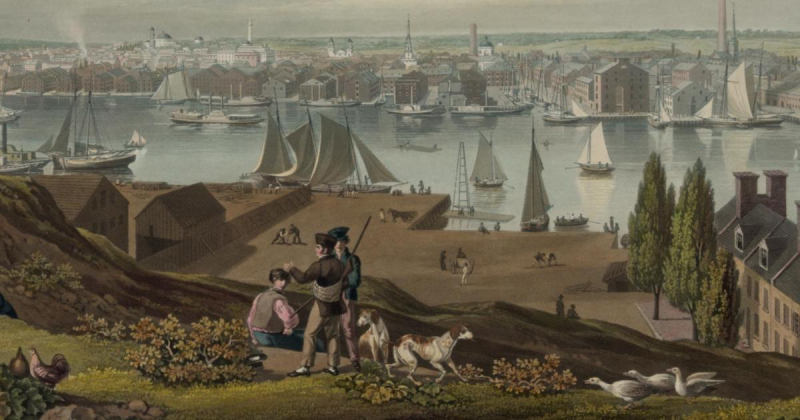
Photo:The Canadian Encyclopedia - War of 1812 Timeline 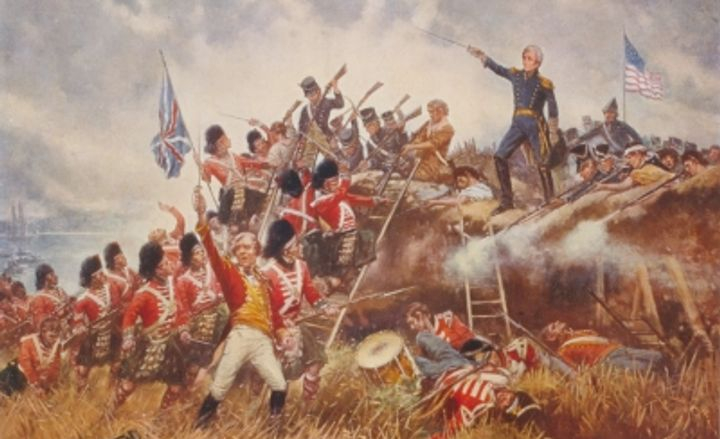
Photo: The Canadian Encyclopedia - War of 1812 Timeline







